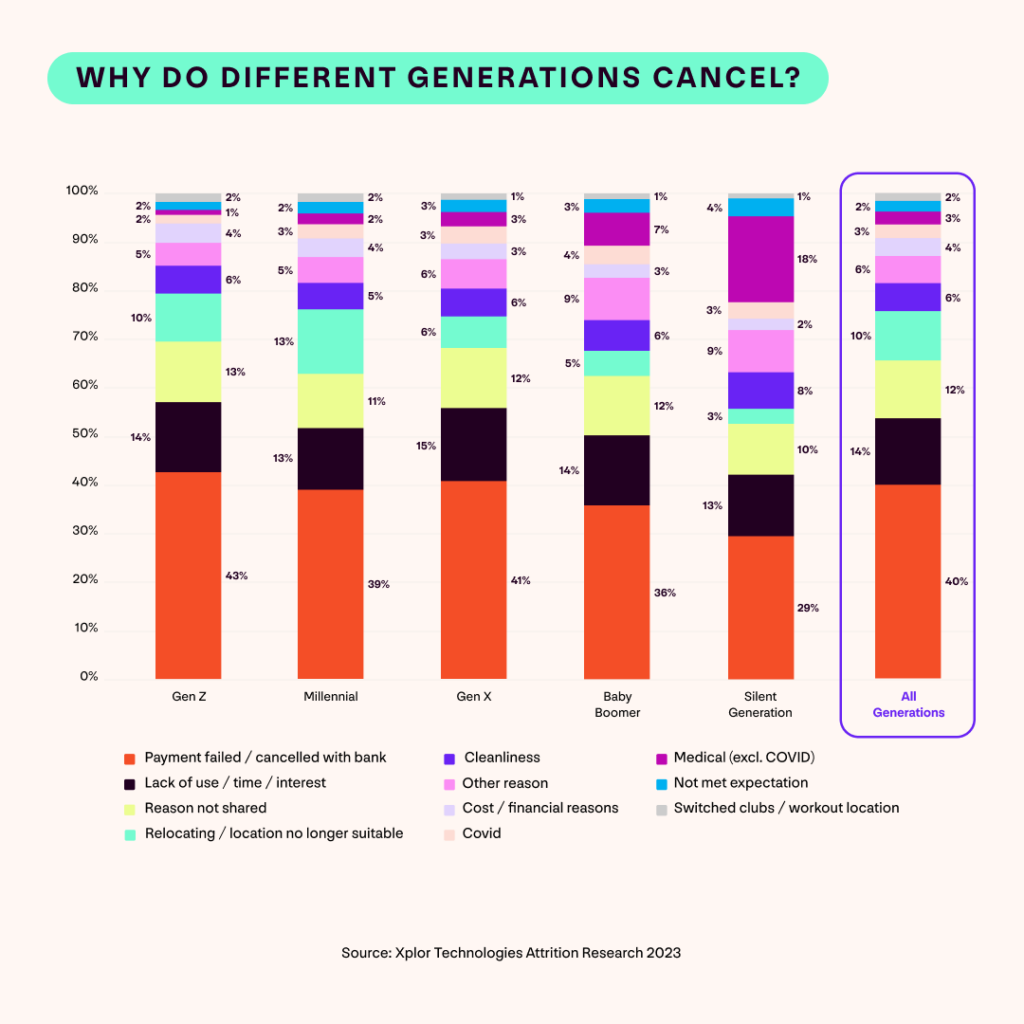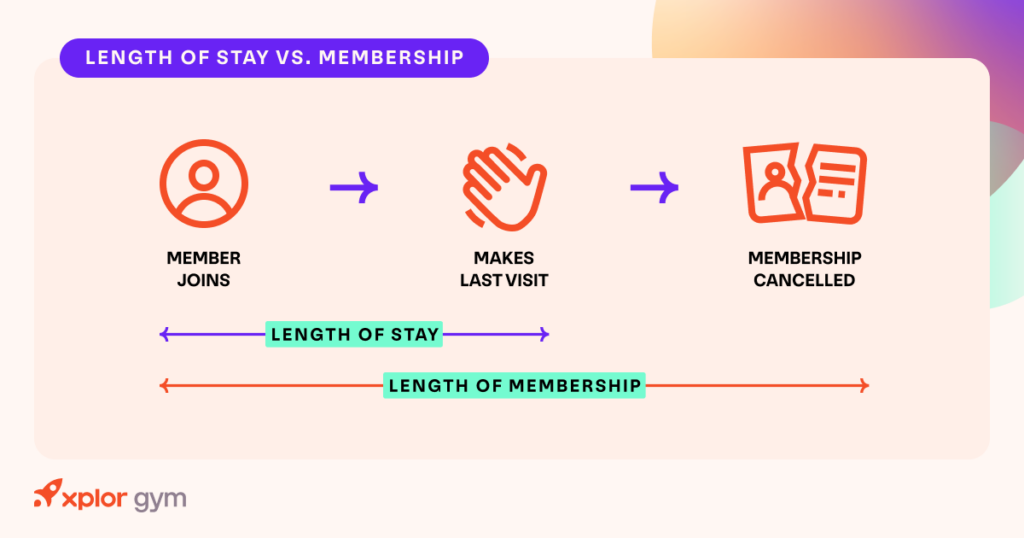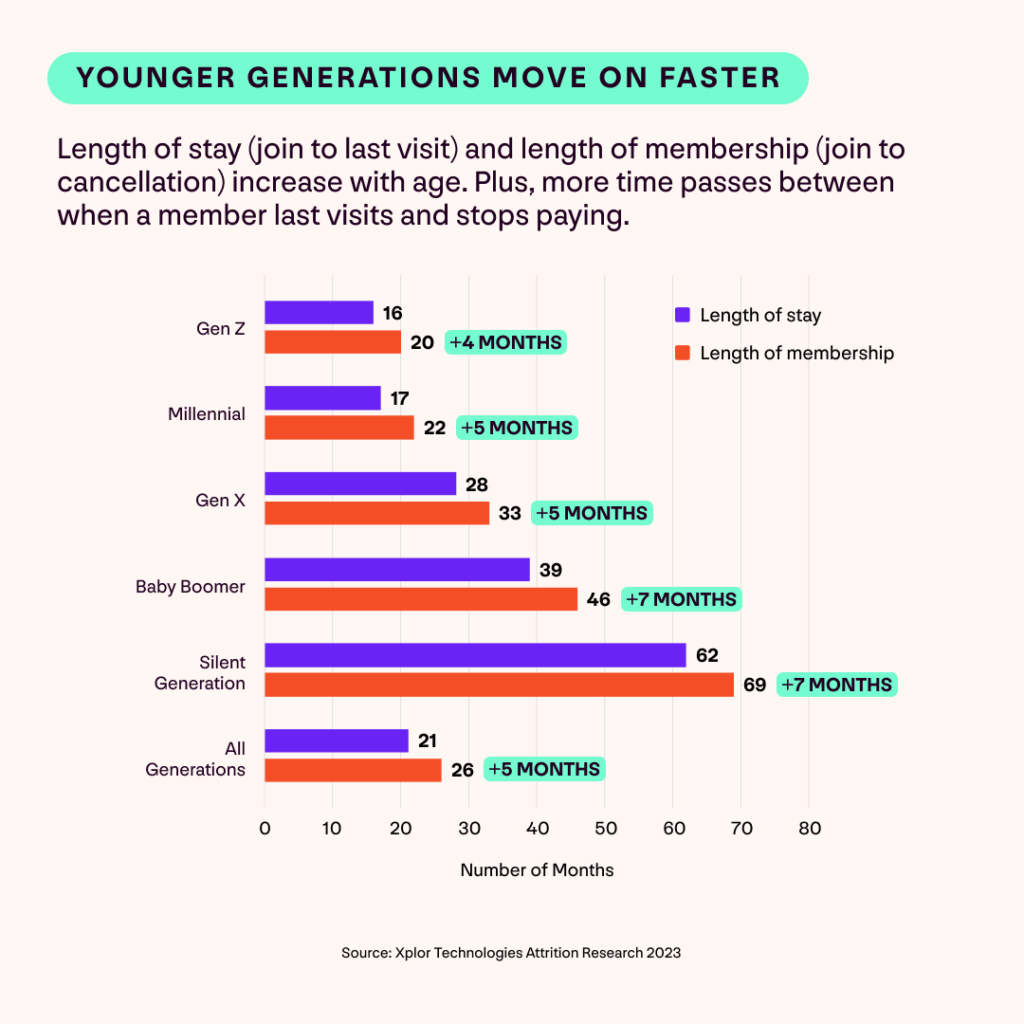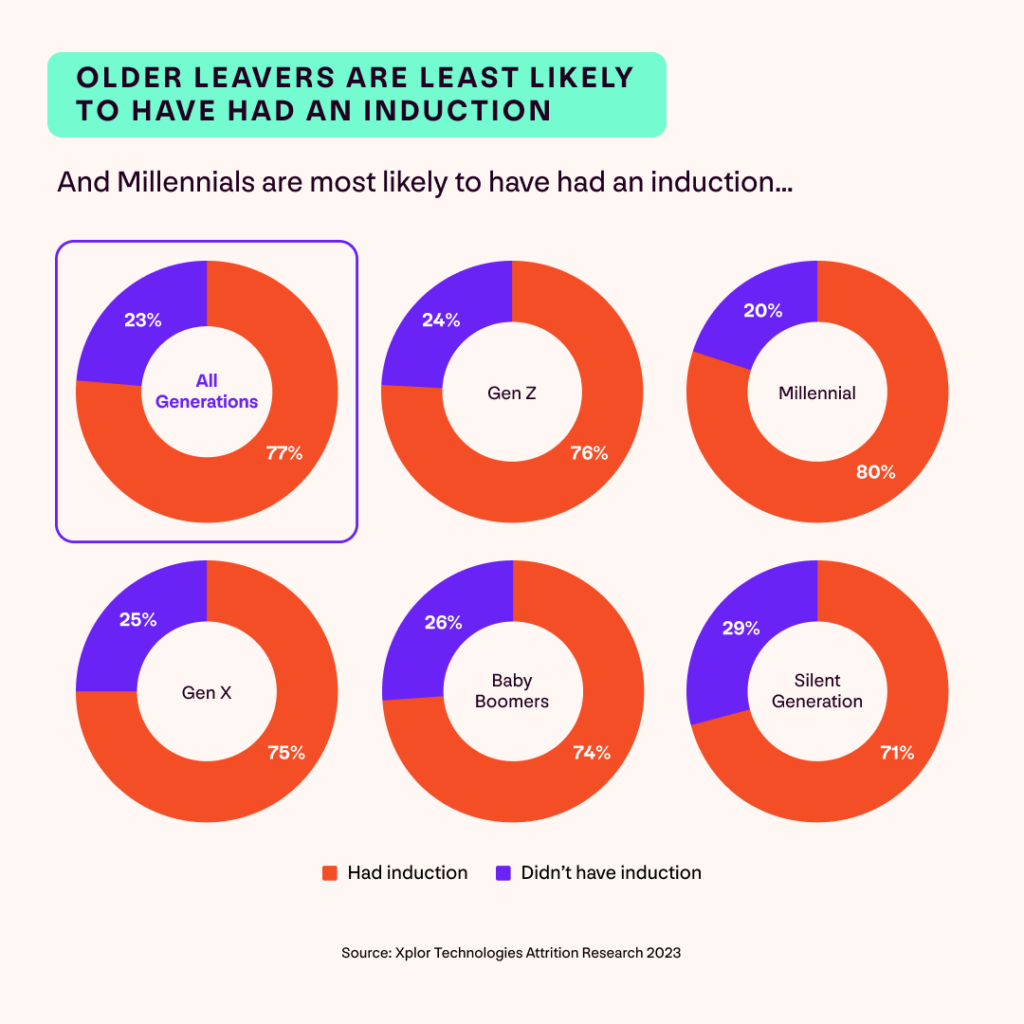Age impacts attrition and retention. Get insights into generational attrition trends and understand how you can tailor your approach to retention for different age groups in this article.
Tackling attrition can help your business achieve lasting growth and become more profitable.
Cut the number of members cancelling (attrition) and you’ll increase the amount of time members stick with you (retention). So, you’ll boost your average member life time value and grow your membership base too.
The Winning The War On Attrition report features exclusive insights from across the UK fitness industry. Plus, tips and tricks to help you engage and retain more members.
In this article, we’re breaking down those findings further to take a generational look at attrition.
About
The insights in this article are based on Xplor data from over 370,000 gym, health club, and leisure members who paid by Direct Debit in the UK & Ireland with a membership that was cancelled between January 2017 and April 2023.
Let’s get stuck in!

Meet the generations
People aren’t all the same. But people do tend to share some common lived experiences based on when they were born. And these common experiences can impact preferences and expectations, as well as lifestyles and habits.
The attrition research covered 5 key generations:
Gen Z
- Born between 1997 and 2012
- Digital natives – grew up with the Internet a part of everyday life
- Stereotypically characterised as ambitious, anxious, and accepting
Millennials
- Born between 1981 and 1996
- Tech-savvy – pick up new technologies fast, tech plays a major role in their daily lives
- Stereotypically characterised as confident, curious, and conscious
Gen X
- Born between 1965 and 1980
- Have straddled the digital and non-digital world
- Stereotypically characterised as resourceful, logical, and problem-solvers
Baby Boomers
- Born between 1946 and 1964
- Named after the post-war boom in birth rate
- Digital immigrants – slower at adopting new tech, need more persuasion to accept it
- Stereotypically characterised as committed, self-sufficient, and competitive
Silent Generation
- Born between 1928 and 1945
- Taught to be seen and not heard – therefore called the Silent Generation
- Much like Baby Boomers, the Silent Generation are digital immigrants – slower at adopting new technologies and sceptical too
- Stereotypically characterised as disciplined, loyal and preferring in-person communications
Reasons for leaving
The Winning The War On Attrition report found that most members quit the gym silently. 52% in fact – 40% due to a failed or cancelled payment and 12% cancelling directly but failing to tell clubs why.

Gen Z quit quietly
For Gen Z this is higher. 56% of former Gen Z members cancelled without telling clubs why. 43% experienced a payment failure or cancelled their payment directly with their bank. And 13% cancelled directly without providing a reason.
True digital natives, Gen Z has grown up using digital subscription services like Netflix and Spotify. These services are easy to cancel, directly within the platform, and don’t require notice periods generally.
Think about your cancellation processes and gym contracts to cater to Gen Z expectations. And capture more insights into why Gen Z members actually cancel making use of digital tools available to you.
Millennials move on
Overall 10% of former gym members quit due to a relocation or location of a club no longer suiting their needs. Of all the generations, Millennials have the highest percentage of leavers with this reason – 13% of former Millennial members.
Millennials do have a reputation as job-hoppers, looking for that next opportunity, and are at a life stage where moving can be more common. So, a change of gym may be in order more often than other generations (especially older ones).
A positive leaving experience is especially important for Millennials, leaving the door open for a potential future return. And multi-site clubs can make it easy for members to switch to a more convenient location.
Gen X lacks time
15% of former Gen X gym members cancelled due to lack of time, use, and interest. That’s slightly higher than the overall average of 14% of former members quitting for this reason.
And 53% of former Gen X members cancelled silently (41% due to a payment failure/cancelled at bank and 12% simply not sharing a reason when cancelling). That’s slightly higher than overall cancellations for that reason, and second highest after only Gen Z.
A lower than average percentage of former Gen X gym members cancelled due to a change of/unsuitable location (6% of Gen X vs. 10% overall) and due to cost/financial reasons (3% of Gen X vs. 4% overall).
Gen X are busy with life! And usually in a more stable position than younger generations when it comes to location and finances. Gyms have the opportunity to help Gen X members build habits that support activity both in the gym and away from it to keep more of this group.
Baby Boomers need support
Cancellations for medical reasons pick up as members age. 7% of former Baby Boomer gym members cancelled for medical reasons (compared to 3% overall).
A lower percentage of Baby Boomers experienced a payment failure or cancelled a payment directly with their bank compared to overall (36% of Baby Boomers vs. 40% overall). And location is less of an issue (5% of Baby Boomers vs. 10% overall). The same goes for cost too (3% of Baby Boomers vs. 4% overall).
Consider how you can support Baby Boomers with changing needs. Freezes may be an alternative for periods of injury or illness. Support them back to activity. Look at ways to help them keep active, where possible.
Silent Generation demands better
As with Baby Boomers, more former Silent Generation gym members left for medical reasons (18% of Silent Generation vs. 3% overall).
Plus, for the oldest generation of gym members, cleanliness concerns lead to cancellation more often than usual (8% of Silent Generation vs. 6% overall). And failure to meet expectations also leads to more cancellations (4% of Silent Generation vs. 2% overall).
Gyms have the opportunity to address cleanliness concerns and understand how expectations can be better met for this generation. As well as supporting medical needs where practical.
Staying and paying
The importance of member retention for gyms can’t be underestimated. It’s vital for consistent, reliable income, and creating a profitable business.
Tracking length of stay (the average time between when a member joins and when they last visit) can help you identify when members are most likely to think about cancelling. Members who visit regularly, are less likely to quit.
And looking at length of membership (the average time between when a member joins and when they cancel), then comparing this to length of stay, how long members typically keep paying after their last visit. And how long you have to get them back into your club.

Length of stay and membership grow with age
Perhaps unsurprisingly, length of stay and length of membership grow with age. The same is true for the amount of time between a last visit and cancellation.

On average UK gym members keep using their membership for 21 months, and cancel at 26 months. So, there are 5 months where members keep paying but don’t actually use their membership.
This gap widens with age:
- Gen Z – Stay for 16 months, leave at 20 months – 4 months difference
- Millennials – Stay for 17 months, leave at 22 months – 5 months difference
- Gen X – Stay for 28 months, leave at 33 months – 5 months difference
- Baby Boomers – Stay for 39 months, leave at 46 months – 7 months difference
- Silent Generation – Stay for 62 months, leave at 69 months – 7 months difference
Given this difference, you could consider different re-engagement strategies for different generations. Gen Z don’t hang around for long, so follow up fast. While Millennials don’t stay or pay as long as Gen X, for both consider looking at past visit habits and usage to re-engage.
Your gym management software should make it easy to see when members become at risk of cancelling and then follow up with a targeted, personalised re-engagement strategy. Millennials and Gen X may appreciate help to fit fitness into busy lifestyles. For example, through digital options and programmes with a clear goal to follow.
Likewise, look at past habits for Baby Boomers and the Silent Generation. Seek to get feedback and identify opportunities to support these members back in.
Starting out strong
Of course, re-engagement strategies are important when habits slip and members become at risk of quitting. Yet, it’s just as important to make sure members are set up for success right from the start of their journey with you. For most gyms, an induction is a staple part of any new gym member onboarding process. The attrition research explored how gym inductions impact attrition. On average, 77% of former gym members had an induction and 23% didn’t.

Millennials are most likely to have had an induction and the Silent Generation are least likely to have had one:
- Gen Z – 76% had an induction
- Millennials – 80% had an induction
- Gen X – 75% had an induction
- Baby Boomers – 74% had an induction
- Silent Generation – 71% had an induction
Stay & pay longer
The attrition research found that although there’s room for improvement, inductions do appear to keep members actively using their membership for longer.
Inductions, as part of a larger onboarding journey, can help members get into the habit of visiting and recognising the value of their membership investment.
Former members who had an induction typically keep visiting for 4 months longer than those who didn’t. This does differ by age:
- Gen Z stay 3 months longer if they had an induction
- Millennials stay 3 months longer if they had an induction
- Gen X stay 6 months longer if they had an induction
- Baby Boomers stay 9 months longer if they had an induction
- Silent Generation stay 4 months longer if they had an induction
Likewise, former members who had an induction also keep paying (don’t cancel) their membership for an average of 3 months longer than those who didn’t have an induction:
- Gen Z pay for 1 month longer if they had an induction
- Millennials pay for 2 months longer if they had an induction
- Gen X pay for 4 months longer if they had an induction
- Baby Boomers pay for 8 months longer if they had an induction
- Silent Generation pay for 4 months longer if they had an induction
Increase uptake amongst Baby Boomers & Gen X
Given that Baby Boomers and Gen X are less likely to have had an induction than Millennials and Gen Z, but stay (and therefore pay) longer if they had an induction, a big opportunity exists to increase uptake of inductions.
If more Baby Boomers and Gen X take up the offer of an induction and therefore stay and pay longer, you’ll increase retention and revenue.
Those who’ve been a gym member previously may have had a poor induction and therefore turn it down. Some may be new and worried the induction will be intimidating.
Rethink and reposition inductions to better appeal to and meet the needs of these members (for more see: Time to rethink & rebrand the gym induction?).
The wrap up…
It can be helpful to understand attrition trends by generation and life stage. So, you can take tailored approaches to making improvements that increase retention if your fitness business targets more than one demographic group.
Especially amongst younger generations, the number of silent cancellations is high, this means you are missing out on opportunities to make improvements to tackle attrition.
Consider how best to cut silent cancellations for your business – getting more feedback, reviewing payment processes, reconsidering contracts and cancellations options etc.
Length of stay and length of membership both increase with age. Effectively re-engaging different generations who become at risk of cancelling, so you increase length of stay, will help you grow retention.
Inductions have a positive impact on length of stay and membership. Fewer older former members had inductions, compared to younger ones.
Gen X and Baby Boomers stayed 6-8 months longer on average if they had an induction. So, repositioning and revamping inductions to increase uptake amongst all age groups presents an opportunity to grow retention and revenue.
Get more insights and expert tips to help you cut attrition and grow retention. Claim your free copy of the Winning The War On Attrition report.
* About the research:
The attrition insights featured in this article and the Winning The War On Attrition report are based on Xplor data from 714,674 gym, health club and leisure members paying by Direct Debit in the UK & Ireland.
As well as current members, it includes data on members who held a membership that’s been cancelled between January 2017 and April 2023.
The data was collected in May 2023.

by Xplor Gym
-
First published: 11 December 2023
Written by: Xplor Gym
